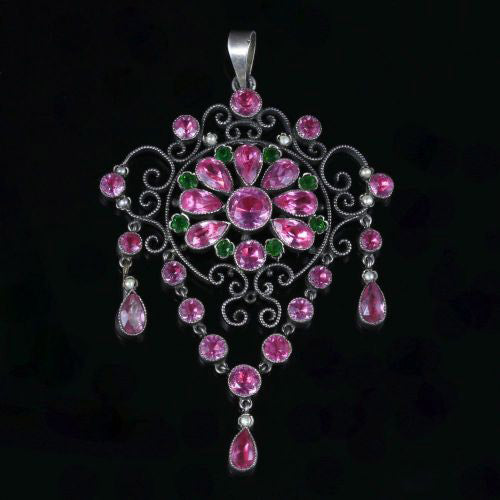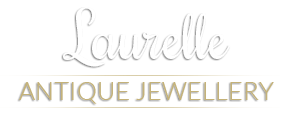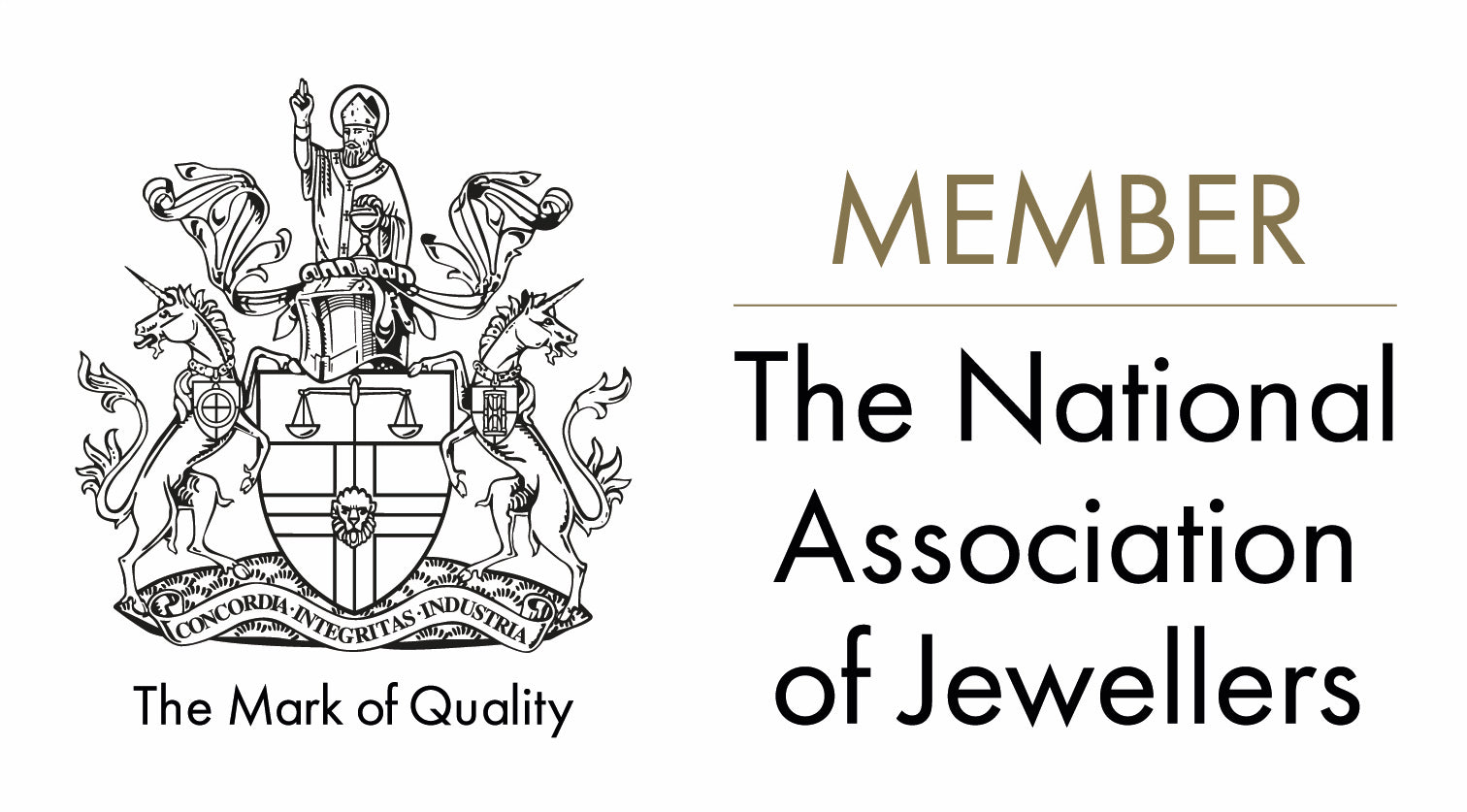Buyers Guide to Edwardian Jewellery

Whilst Edward VII’s reign was a short one, it marked the birth of a new wave of innovations and societal changes that had a profound effect on the art produced at the time. At the time of his ascension to the throne Edward was already established as a paragon of the fashionable elite. The trends of continental Europe were emulated by these ruling classes, creating a variety of styles that drew heavily on those of Britain’s nearest neighbours, particularly France.
Britain was forging ahead with new alliances with France and Russia, which would rise to the fore in the subsequent years with the start of the First World War. Despite the rising tension with Germany Edwardian Britain was far more open to foreign influence than it had been during the preceding years. The prosperity of the Victorian era was still fuelling innovation and ingenuity which benefitted not just the elite, but all levels of society.


The Belle Epoch

The Edwardian era was also known as the Belle Epoch, meaning “Beautiful Era”, and referenced the elegant lifestyle of King Edward which was emulated by the ruling classes. Female fashion shifted markedly from the hourglass shape popular during the reign of Queen Victoria to an S-shaped standard, whilst inventions such as the sewing machine and other innovations in fabric yielded more elaborate fashions which were more affordable to the working classes.

Increases in literacy, as well as new communications in the form of the telephone and telegraph meant that the pace of social change increased. This meant that although the reign of Edward VII was roughly a tenth of the time in which Victorian sat on the throne it was an incredibly influential period, and produced many works which are highly valued today.
Edwardian Gold

The Edwardian period followed the great Victorian gold rushes in Australia, which remained a British colony until 1901. This surfeit of gold allowed Edwardian jewellers to be more adventurous with the ways in which the metal was worked.
New processes pioneered during the reign of Queen Victoria were now perfected, and the optimism of this pre-war era crept into many expressions of artistic talent.
Paste Jewellery

The construction of jewellery with paste stones, a heavy flint glass that simulated the fire and lustre of gemstones, was embraced in the Georgian and Victorian periods, and further refined during the reign of King Edward. Many Edwardian pieces contain a variety of coloured stones made in this fashion.
You can read more about paste jewellery here.
Edwardian Design

The Edwardian era saw a resurgence in delicate, feminine styles of jewellery. Fine curved engravings and filigree worked arrangements provided ideal settings for intricately cut gemstones. Stones were cut into myriad different shapes thanks to the invention of tools and techniques which were not available to earlier jewellers.
Edwardian pieces are often made from a smaller number of components, in part due to the fact that the yellow gold based solder used was so visible. Later periods would make use of white gold solder, but this new type of alloy was not available until after 1912.
Ostentatious wealth and luxury was a defining factor in the jewellery designs of this era, and Edwardian jewellers did not shy away from displaying extravagance in their works. Some of the most elaborate and beautiful pieces from this era are built around arrays of precious stones. Edwardian Cluster rings with large central stones surrounded by haloes of diamonds, and elaborate arrangements of precious metals adorned with countless sparkling stones in slim curved designs which later came to be known as Garlands.
Art Nouveau

Art Nouveau reached the peak of its popularity towards the tail end of Edward’s reign. This hugely influential artistic movement focused on organic lines and the monochromatic, linear patterning that could be seen in Japanese prints.
These tenets inspired an increase in the use of diamonds and pearls, whose bright white lustre was the perfect accompaniment to the designs of the day. Cultured pearls were not developed until later ages, so the Edwardian era saw jewellers cut smaller pearls into two halves to mount onto metal.
Where Victorian jewellers had pulled inspiration from ancient history and the classical world, the Art Nouveau movement was a conscious attempt to create a new style which was not beholden to the tradition of ages. The result was a radical departure from what had come before, and a style which became a defining influence on the artistic movements of the 20th century.
Workmanship, Rarity and Value

The relative prosperity of the period, coupled with new methods that streamlined the crafting process, meant that Edwardian jewellers produced a large number of pieces. However, Edward only reigned for around a tenth as long as his mother, making Edwardian pieces relatively rare by comparison.
The Edwardian era can be viewed as a period of flux as industry and arts began to adopt new technologies wholesale, and experiment with the ways in which they could improve their craft. It is precisely this innovative mindset that makes the jewellery from this period so compelling. It was a time of creative freedom which led to the creation of a plethora of influential styles that are particularly treasured by those with an interest in the continually evolving discipline of jewellery creation.

The Edwardian period came to an end in 1910, but it was the start of the First World War in 1914 which marked an end to the extravagance and obsession with beauty that this time period exemplified. The shadow of the Great War had a profound effect on the culture of the British Isles. Never again would craftsmen have the freedom and impetus to create in the same way.
It is for this reason that, despite its brevity, the Edwardian era has inspired a great many collectors of fine jewellery. Victorian jewellery was crafted over a period of 64 years whilst Victoria reigned, whereas Edward’s reign of a little over a decade produced a far smaller number of pieces. This means that Edwardian jewellery is less abundant than the pieces from the preceding eras, and that although its initial cost may be a little lower it is highly likely to appreciate in value over time.
At Laurelle Antique Jewellery we have spent years developing the necessary expertise to identify, acquire and present the finest Edwardian jewellery in the United Kingdom. To view our full collection of Edwardian jewellery pieces. You can also find our collection of fine Edwardian Engagement rings or Edwardian Diamond engagement rings for those looking for an extra sparkle.
Click the links below to learn more about the Georgian, Victorian and Art Deco periods.
The Georgian Period
The Victorian Period
The Art Deco Period
Find Antique and Vintage Jewellery With Laurelle Antique Jewellery
Contact us should you have any questions about our available antique jewellery products or need help sourcing a particular item of antique Jewellery for your collection. From Edwardian Solitaire Rings to Edwardian Cocktail Rings, we can help you.



